Dealing with a yeast infection can be both uncomfortable and frustrating. These infections, often caused by the fungus candida albicans, lead to symptoms such as itching, burning, and discharge. Luckily, there are effective home remedies that can provide relief. Understanding simple and natural treatments can help manage these infections.
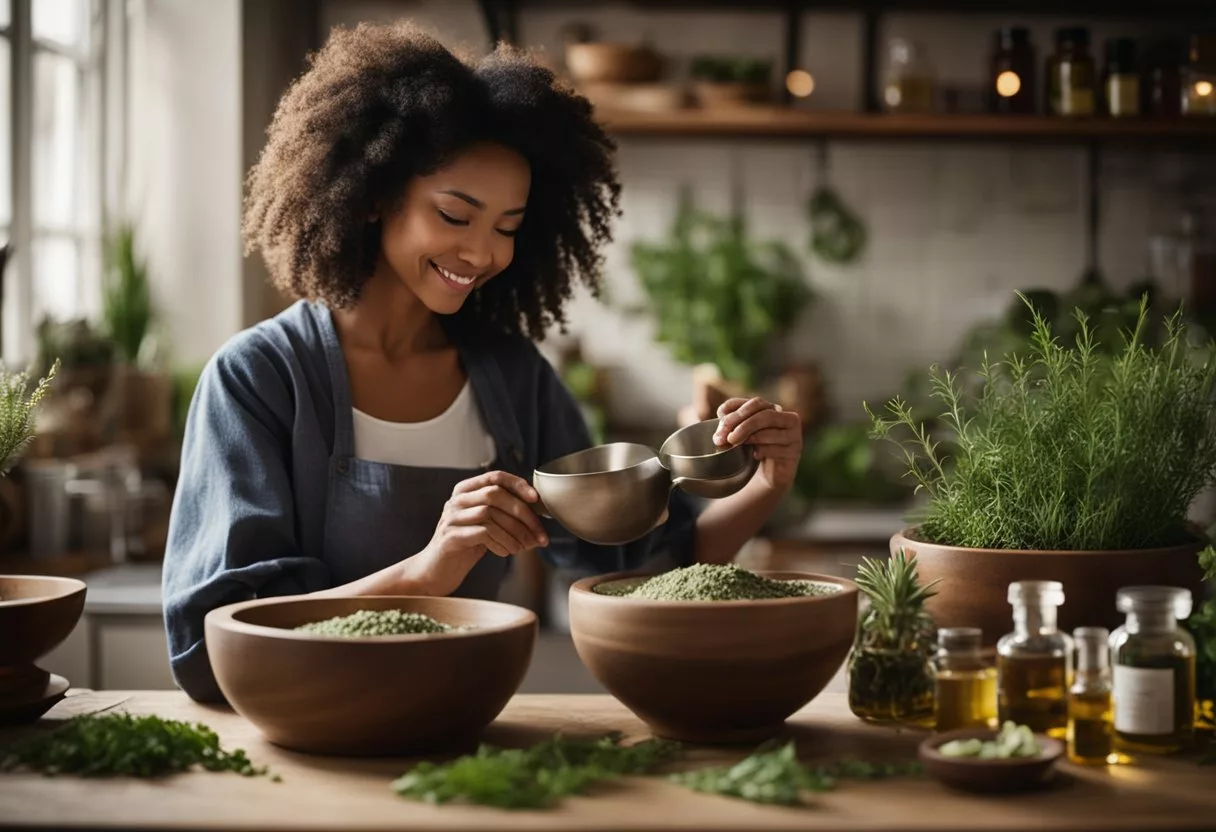
Probiotics and natural antifungal remedies are popular choices for treating yeast infections at home. Yogurt and probiotics support healthy bacteria in the body, potentially reducing yeast overgrowth. Natural antifungals, like tea tree oil and coconut oil, also offer beneficial properties that may combat the infection effectively.
In addition to these treatments, some lifestyle changes can help prevent and manage infections. Reducing sugar intake, wearing breathable clothing, and practicing good hygiene are essential steps. Remember, if symptoms persist or worsen, it’s essential to seek medical advice to ensure proper treatment and care.
Key Takeaways
- Simple home remedies can effectively manage yeast infection symptoms.
- Probiotics and natural antifungal treatments like yogurt and tea tree oil are useful.
- Lifestyle changes and good hygiene help prevent recurring infections.
Understanding Yeast Infections
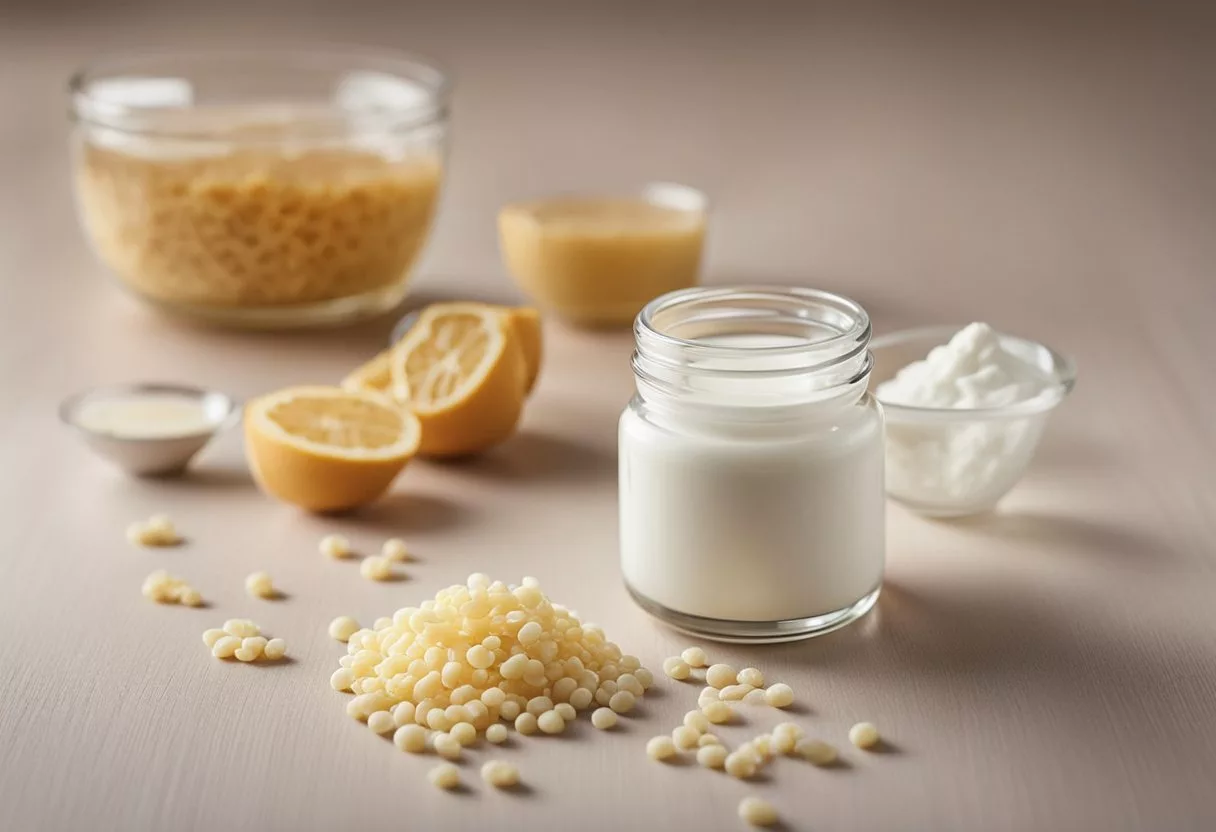
Yeast infections can cause itching, burning, and discharge. They are influenced by several factors like antibiotics, diabetes, and hormonal changes.
Causes and Symptoms
Yeast infections are usually caused by the overgrowth of a fungus called Candida. This fungus naturally resides in the body, but it can grow excessively in certain conditions. Common symptoms include itching, burning, and a thick, white vaginal discharge.
The immune system plays a crucial role in managing yeast infections. When it is weakened, the body becomes more susceptible to infections. Women who are pregnant may experience hormonal changes that increase the risk of developing a yeast infection.
Factors Contributing to Yeast Infections
Several factors contribute to yeast infections. Antibiotics can disrupt the natural balance of bacteria and yeast in the vagina, leading to an overgrowth of Candida. Wearing tight, non-breathable clothing can also create a warm and moist environment that promotes fungal growth.
People with diabetes are at a higher risk because high blood sugar levels can encourage yeast growth. Hormonal fluctuations during pregnancy or due to birth control can also impact yeast levels. Maintaining good hygiene and wearing breathable cotton underwear can help reduce the risk.
Probiotics and Yeast Infections
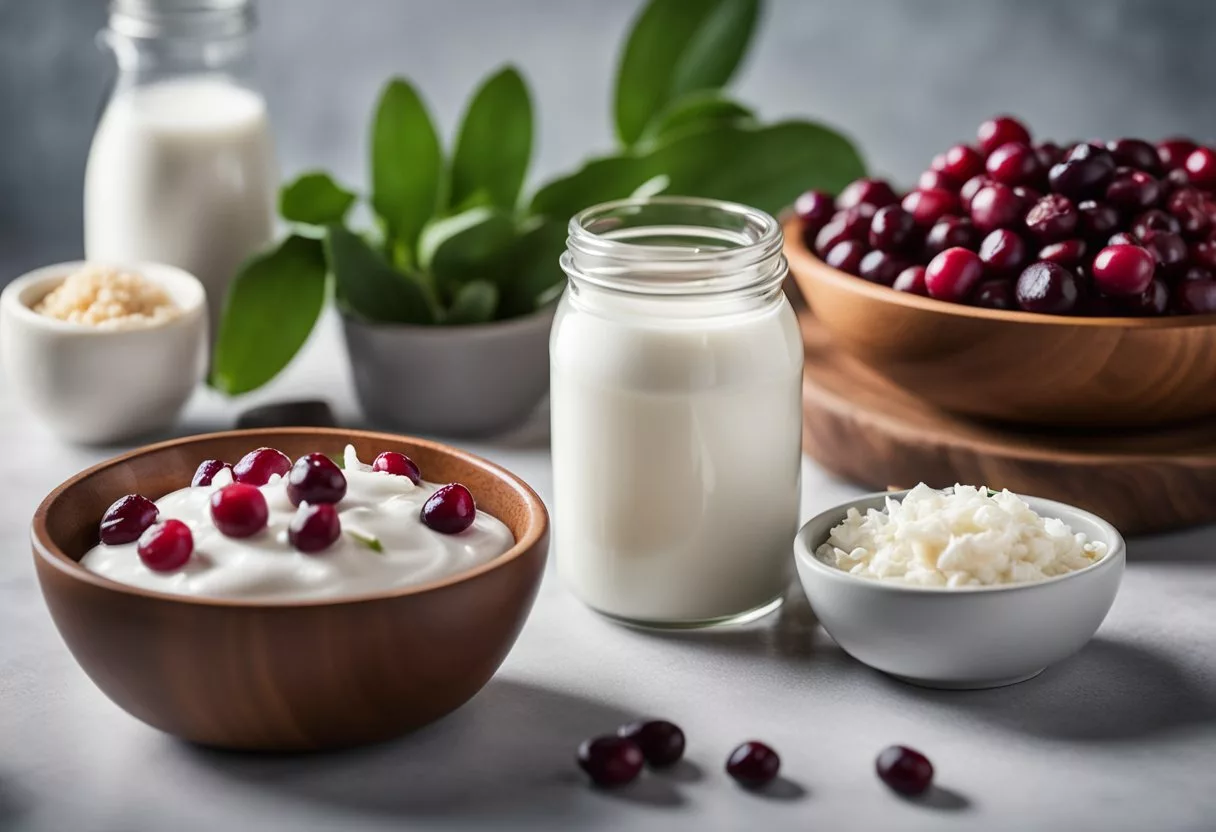
Probiotics can play a crucial role in maintaining a healthy vaginal microbiome and preventing yeast infections. Lactobacillus acidophilus is a type of good bacteria that can be particularly beneficial.
Benefits of Probiotics
Probiotics help balance the natural flora in the vagina. This is important because an imbalance can lead to the overgrowth of yeast. Lactobacillus acidophilus releases lactic acid, which maintains a low pH in the vagina.
A low pH creates an environment where yeast cannot thrive. Furthermore, probiotics can boost the immune system, helping the body fight off infections. Studies suggest that consistent intake of probiotics may reduce the chances of recurrent yeast infections.
Probiotic Foods and Supplements
Probiotic-rich foods can be easily included in the diet. Yogurt, especially Greek yogurt, contains live cultures of Lactobacillus which can help restore the balance of good bacteria. Other foods like kimchi, sauerkraut, and kefir also contain probiotics.
Additionally, probiotic supplements are available for those who may not consume enough probiotic-rich foods. These supplements often contain strains like Lactobacillus acidophilus and are easy to incorporate into daily routines. Be sure to consult a healthcare provider before starting any new supplement.
Using both foods and supplements can enhance the body’s natural defenses and promote vaginal health.
Natural Antifungal Remedies
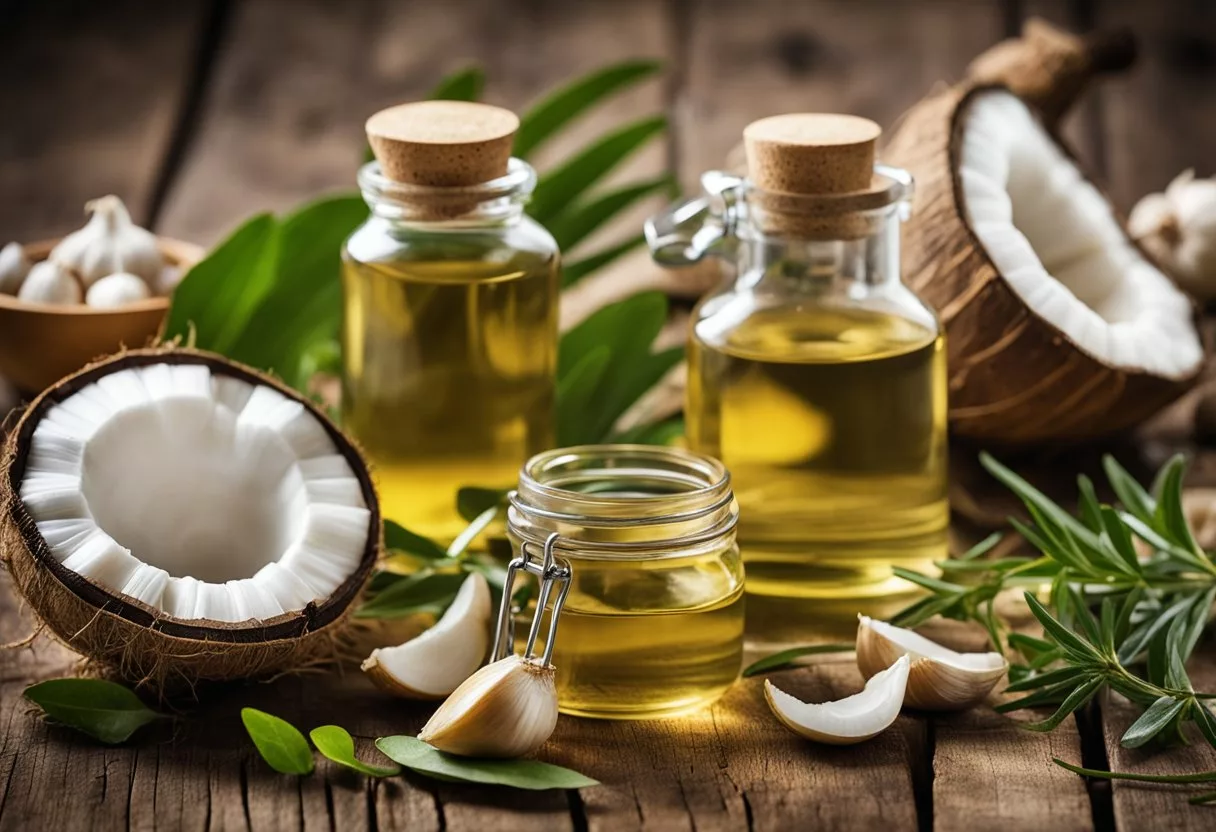
Natural remedies for yeast infections can be quite effective. Tea tree oil, garlic, and coconut oil all have potent antifungal properties that may help alleviate symptoms and clear the infection.
Tea Tree Oil
Tea tree oil is a popular essential oil known for its powerful antifungal properties. It is often used as a natural remedy for Candida albicans, the yeast responsible for many infections. To use tea tree oil, it’s important to dilute it with a carrier oil like coconut oil or olive oil to avoid skin irritation. A common mixture is six drops of tea tree oil in one ounce of carrier oil. Application can be made by soaking a tampon in the diluted solution and inserting it for a short period, usually around two hours. It’s recommended to consult a healthcare professional before starting this treatment to ensure it’s safe for individual circumstances.
Garlic
Garlic has been used as a natural antifungal agent for centuries. Its effectiveness comes from allicin, a compound with strong antifungal properties. Garlic can be consumed in various ways to help fight off a yeast infection. Eating raw garlic or adding it to meals can boost the body’s ability to fight Candida albicans. For topical use, some people make a paste from crushed garlic cloves and apply it to the affected area. This should be done with caution since garlic can cause a burning sensation if left on the skin for too long. As with any home remedy, consulting a healthcare professional before use is advisable.
Coconut Oil
Coconut oil is another natural remedy celebrated for its antifungal properties. It contains medium-chain fatty acids, which can help to disrupt the cell walls of Candida albicans, leading to the yeast’s destruction. Coconut oil can be used topically by applying a thin layer to the affected area several times a day. It’s also safe for internal use and can be consumed by adding it to food or taking a spoonful directly. For best results, look for virgin coconut oil, which retains more of its active properties compared to refined versions. Using coconut oil as a remedy can provide a soothing effect while combating the infection.
Home Treatments for Yeast Infections
There are several effective home treatments available for yeast infections. These remedies include the use of natural substances such as vinegar baths, boric acid suppositories, and various essential oils.
Vinegar Baths and Douches
Using vinegar, especially apple cider vinegar, can help restore the pH levels in the vagina. However, caution is necessary as excessive douching can irritate the vaginal lining.
Vinegar baths involve adding a small amount of vinegar to bathwater and soaking for about 20 minutes. This method is less abrasive than douching and can help balance the vaginal environment. It is essential to avoid using vinegar directly without dilution to prevent irritation.
Herbal Suppositories
Boric acid is a common remedy for yeast infections, particularly those resistant to other treatments. Boric acid suppositories can be inserted into the vagina before bedtime and used consistently for about two weeks.
These suppositories act as an antiseptic, helping to clear up the infection. It is important to note that boric acid should not be ingested and must be kept away from children. Other herbal suppositories may contain ingredients like garlic or thyme, which are also known for their antibacterial properties.
Natural Oils and Creams
Several natural oils like oil of oregano and coconut oil can be effective against yeast infections. Oil of oregano, which contains carvacrol, works as an antifungal by attacking the Candida yeast.
Coconut oil can be applied directly to the affected area, providing relief due to its antifungal properties. Similarly, tea tree oil can be used as a topical treatment. It’s essential to dilute tea tree oil with a carrier oil to prevent irritation.
Creams containing vitamin E can also soothe irritated skin and support healing. These natural treatments can offer relief and assist in managing symptoms while maintaining vaginal health.
Diet and Lifestyle Adjustments
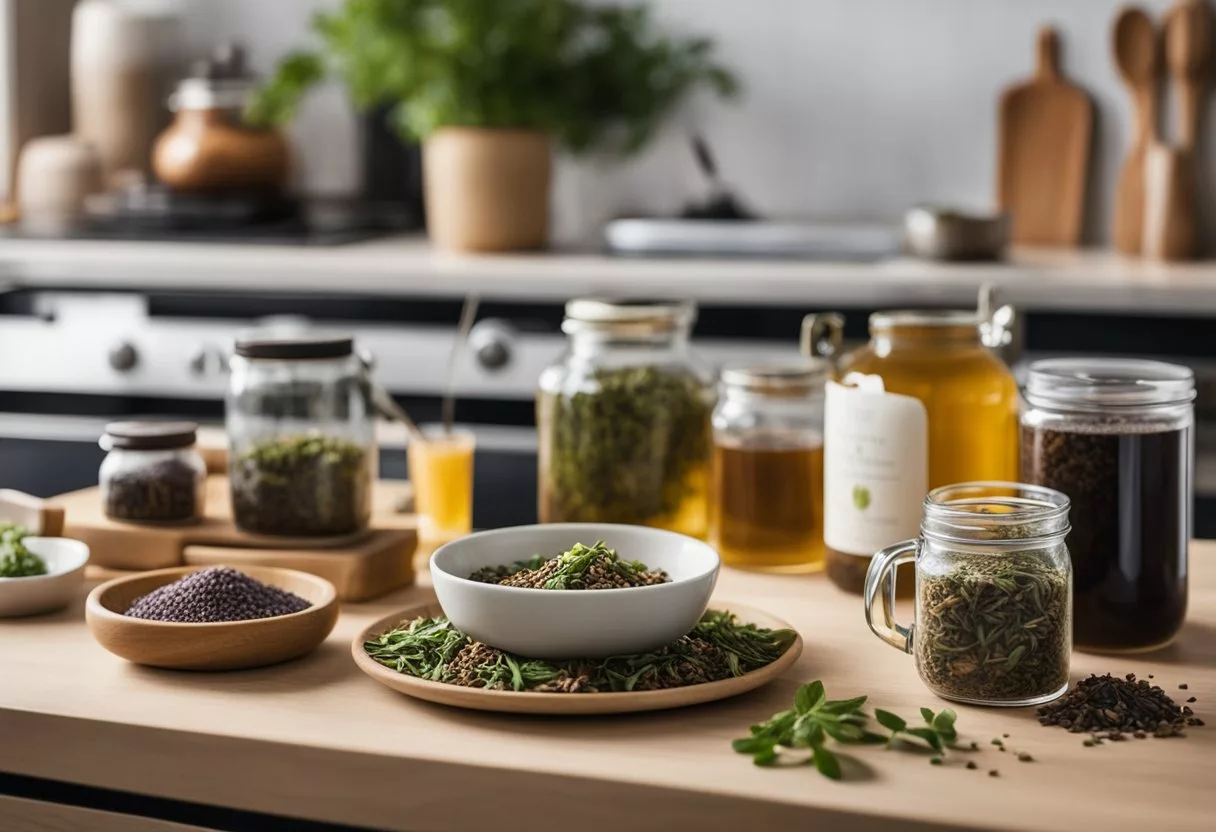
Maintaining proper diet and lifestyle choices can play a significant role in managing and preventing yeast infections. Adjustments in diet, careful sugar management, and good hygiene practices can aid in balancing the body’s natural flora, promoting vaginal health, and reducing the risk of infections.
Dietary Changes
A balanced diet can impact vaginal health significantly. Incorporating probiotic-rich foods such as yogurt, kefir, and sauerkraut helps maintain a healthy balance of bacteria in the body.
Limiting refined carbohydrates and processed foods is crucial as they can promote the growth of Candida.
Adding foods like garlic and coconut oil, known for their antifungal properties, can also be beneficial. It’s essential to drink plenty of water to help flush out toxins and keep the body hydrated.
Managing Sugar Intake
High levels of sugar can lead to an overgrowth of Candida, contributing to yeast infections. Reducing sugar intake is essential, especially for individuals with diabetes as they are more prone to infections.
Avoid sweetened beverages, candies, and baked goods.
Instead, opt for natural sweets like fruits, but keep these in moderation. Checking food labels for hidden sugars under different names (like high fructose corn syrup) is a good practice.
Clothing and Hygiene
Wearing cotton underwear allows the skin to breathe and reduces moisture buildup, which is vital for preventing yeast infections.
Tight-fitting clothing can trap moisture and heat, creating an environment where yeast can thrive, so opt for loose, breathable garments when possible.
Maintaining good hygiene practices includes changing out of wet swimsuits and workout clothes promptly. Avoid using scented soaps and douches that can disrupt the natural vaginal flora.
Using mild, unscented products helps in maintaining vaginal health.
When to Seek Medical Advice

If symptoms don’t improve after using home remedies, it’s important to contact a healthcare provider. Persistent symptoms might need prescription medications. Fluconazole, often known as Diflucan, can treat many yeast infections with a single dose.
Chronic or recurrent yeast infections are a sign to seek medical treatment. If infections happen more than four times a year, a doctor can help find an underlying medical condition.
Severe symptoms, such as intense itching, sores, or significant discomfort, also require professional advice. Over-the-counter antifungal medication like miconazole and clotrimazole might not be enough for these cases.
If pregnant, it’s important to consult a doctor before using any treatment. Some treatments might not be safe during pregnancy.
Here’s a quick list of when to see a doctor:
- No improvement after home remedies
- Infections more than four times a year
- Severe itching or discomfort
- Soreness or sores around the vaginal area
- During pregnancy
Proper medical treatment can prevent further complications and ensure effective healing.
Frequently Asked Questions
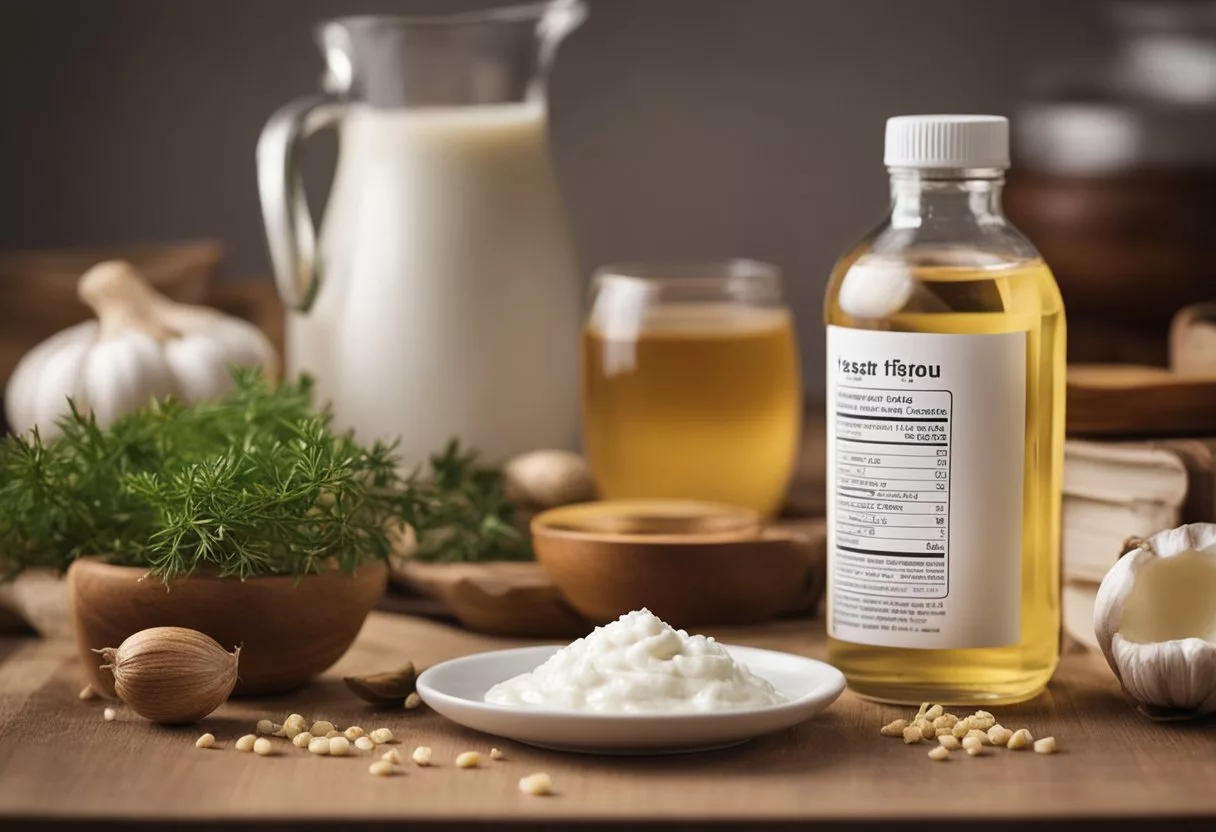
People often have questions about addressing yeast infections with home remedies, from quick natural solutions to signs of healing and effective over-the-counter treatments.
How can I naturally get rid of a yeast infection quickly?
Probiotics like natural yogurt can help balance the bacteria in the body. Applying it directly or consuming it might provide relief. Boric acid is an antiseptic that some find effective for persistent infections. It can be used in vaginal suppositories.
Are there any effective home remedies for yeast infections?
Oil of oregano, available in capsules or liquid form, may help control yeast infection symptoms. Applying a few drops inside the genital area can be beneficial. Other remedies include antifungal properties of tea tree oil or the pH-balancing effects of coconut oil.
What signs indicate that a yeast infection is healing?
Reduction in itching, lessened discharge, and a decrease in irritation or redness are positive signs. As symptoms improve, the infection is likely resolving. It’s essential to complete any treatment to avoid a recurrence.
Which over-the-counter pill is best for treating yeast infections?
Fluconazole is a common over-the-counter pill used to treat yeast infections. It is often taken as a single dose and can effectively clear up the infection. It’s important to follow the dosing instructions.
What household items can help treat a yeast infection?
Certain household items like coconut oil and aloe vera gel can soothe and treat yeast infections due to their antifungal properties. Plain, unsweetened yogurt is another commonly used remedy for its probiotics. Avoid using items like apple cider vinegar as they can irritate the skin.
Are there drinks that can help combat a yeast infection?
Drinks like cranberry juice and unsweetened probiotic-rich beverages may support the body in fighting yeast infections. Green tea is another option due to its antifungal properties. Keeping hydrated with water is also crucial to support overall health.